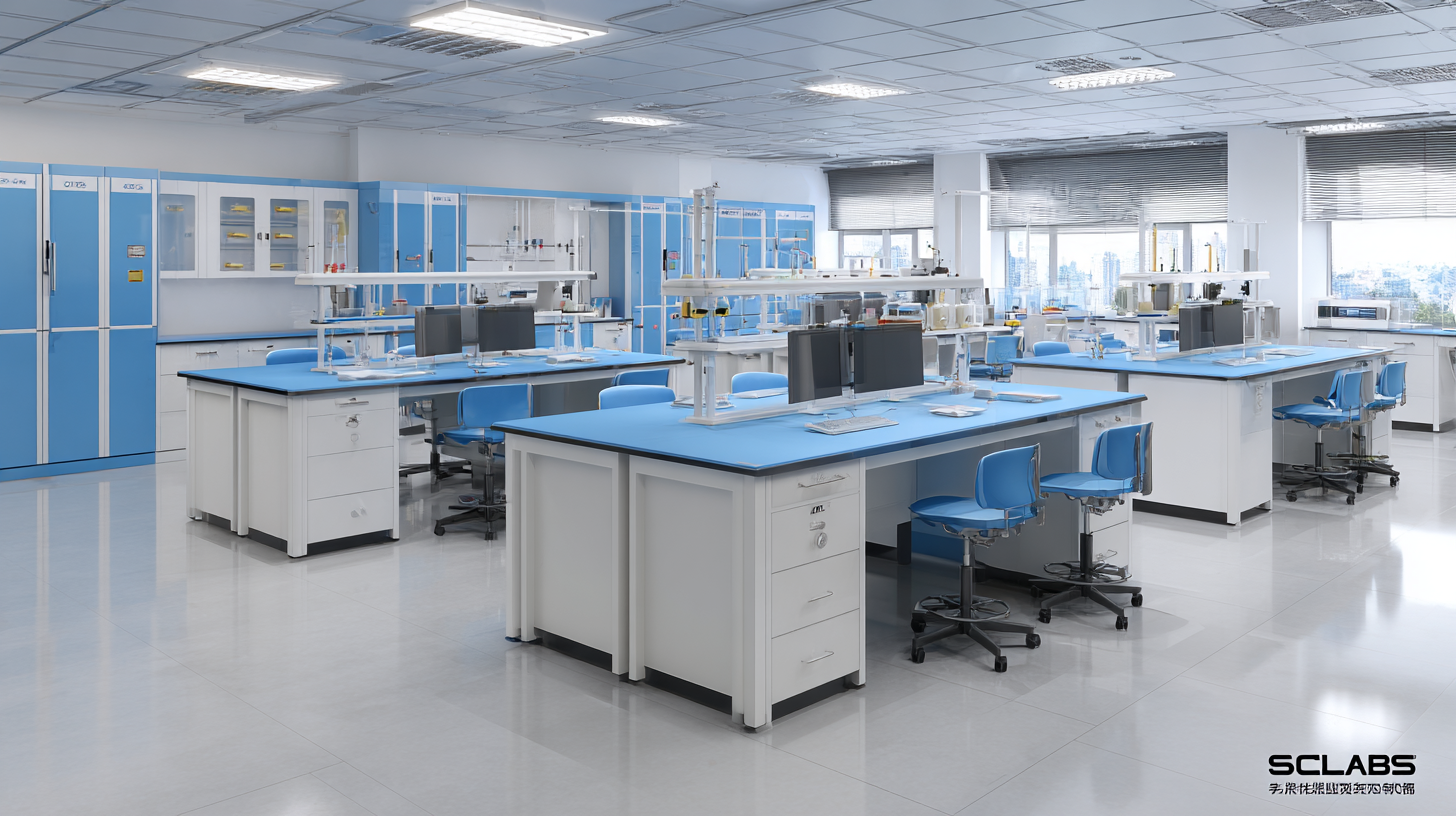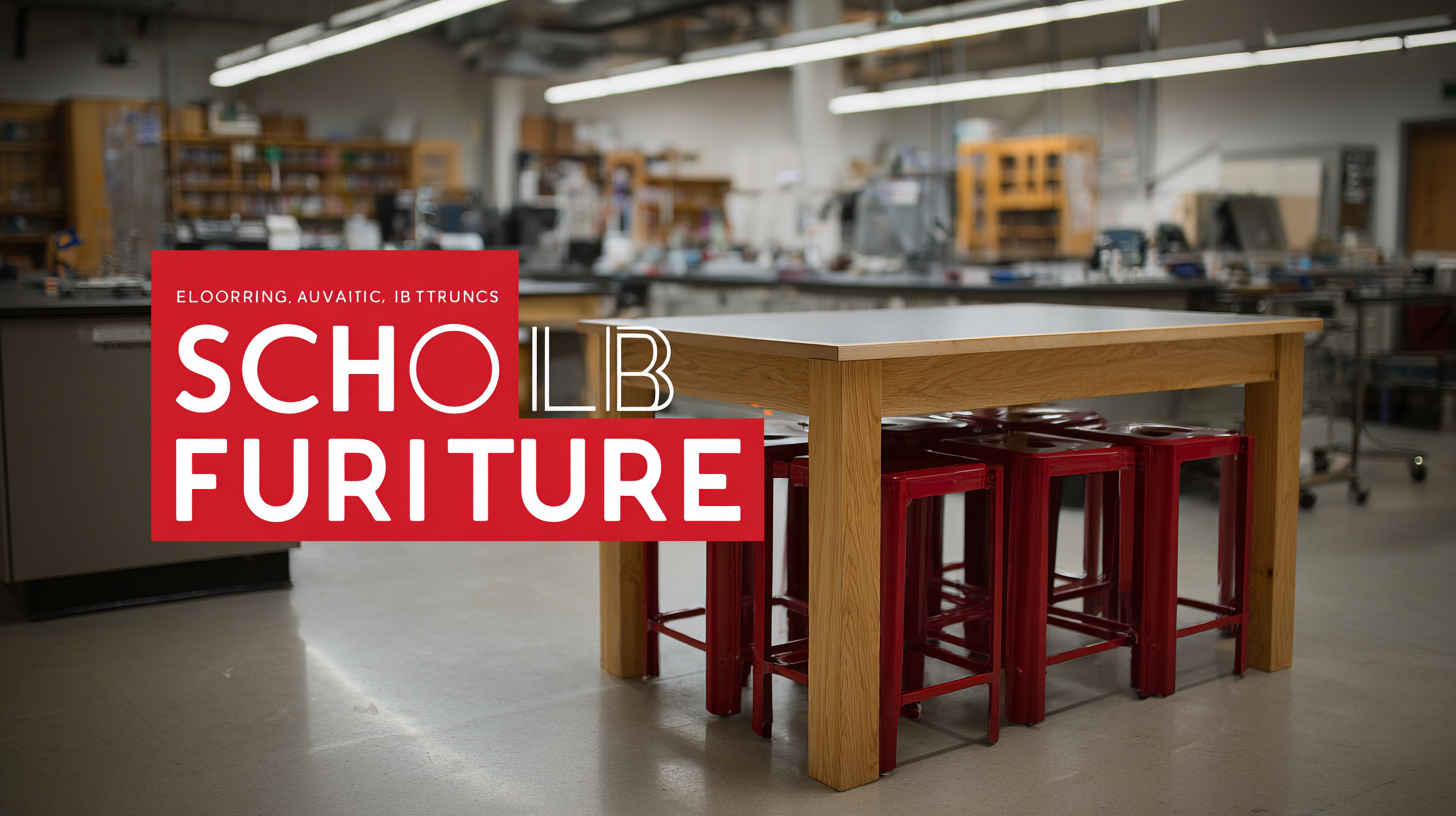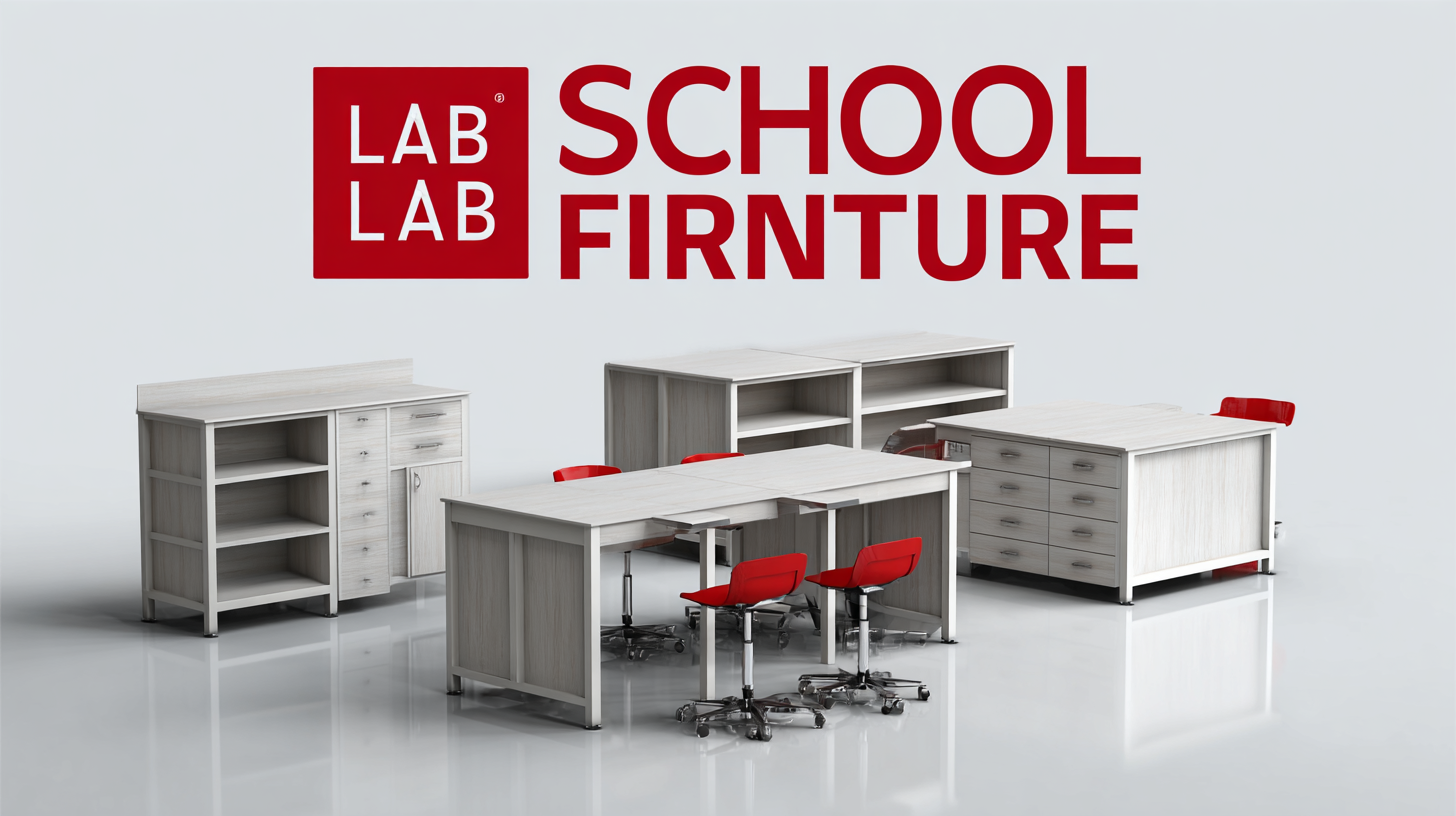In the dynamic world of education, creating an engaging and functional learning environment is paramount, especially in science laboratories where experimentation and innovation thrive. The selection of appropriate School Lab Furniture plays a critical role in facilitating effective teaching and enhancing student safety. This blog will delve into the innovative alternatives available for optimizing school lab furniture solutions, examining various examples that highlight creativity and practicality. By exploring contemporary designs, sustainable materials, and ergonomic features, we aim to provide educators and administrators with insights that not only meet safety standards but also foster an inspiring atmosphere for young minds. Join us as we uncover how thoughtfully designed lab furniture can transform the educational experience, igniting curiosity and encouraging hands-on learning in science education.

In recent years, the landscape of school lab furniture has undergone significant transformations, driven by innovations in design and functionality. Educational institutions are increasingly recognizing the importance of flexible, adaptable spaces that foster collaboration and creativity. Modern lab furniture now includes modular workstations that can easily be reconfigured to accommodate different teaching styles and group sizes, promoting an interactive learning environment.
Tip: When selecting lab furniture, consider ergonomics and adjustability. This will ensure that students of all ages and heights can work comfortably and effectively, reducing the risk of strain or injury.
Another notable trend is the integration of technology into lab furniture design. Many new solutions offer built-in electrical outlets and USB ports, making it easier for students to connect their devices and engage with digital learning resources. Additionally, furniture made from sustainable materials is gaining popularity, reflecting a growing commitment to environmentally responsible practices in education.
Tip: Look for lab furniture suppliers who prioritize sustainability. This not only benefits the environment but also provides students with a valuable lesson on the importance of eco-friendly practices in their future careers.

Ergonomic design plays a vital role in enhancing student engagement and improving learning outcomes in school laboratories. By providing furniture that accommodates the natural posture and movement of students, schools can create an environment that fosters creativity and focused attention. Flexible seating options, height-adjustable tables, and supportive chairs not only cater to diverse body types but also encourage collaboration among students. Research has consistently shown that when students are comfortable, they are more likely to participate actively in experiments and discussions.
When selecting lab furniture, consider the following tips to optimize ergonomics:
1. Choose adjustable furniture that can easily be modified to fit each student's needs, allowing for a range of activities, from group work to solo projects.
2. Incorporate materials that provide adequate support and cushioning. Look for chairs with lumbar support and tables with rounded edges to minimize physical strain.
3. Ensure that the layout of the lab promotes movement and accessibility, allowing students to shift between different workstations without interruption.
By prioritizing ergonomic designs, educators can significantly enhance both the engagement levels and the overall learning experience for students in laboratory settings.
| Furniture Type | Ergonomic Features | Impact on Engagement (%) | Impact on Learning Outcomes (%) | User Satisfaction Rating (1-5) |
|---|---|---|---|---|
| Adjustable Lab Desks | Height adjustable, tilt feature | 85 | 90 | 4.7 |
| Ergonomic Stools | Lumbar support, footrest | 78 | 85 | 4.5 |
| Collaborative Workstations | Multi-user design, interactive surfaces | 90 | 92 | 4.9 |
| Flexible Lab Chairs | Swivel base, adjustable height | 82 | 88 | 4.6 |
| Mobile Storage Units | Wheels, height variations | 75 | 80 | 4.2 |
The increasing emphasis on sustainability has led educational institutions to seek eco-friendly options for lab furniture. Traditionally, lab furniture has been made from materials that contribute to environmental degradation. However, the use of sustainable materials, such as bamboo, recycled plastics, and low-VOC (volatile organic compounds) finishes, is becoming more prevalent. According to a report by the Sustainable Furnishings Council, the demand for environmentally responsible furniture increased by 40% over the past five years, highlighting a significant shift in consumer preferences towards green solutions.
Using sustainable materials not only reduces the environmental footprint of educational institutions but also ensures a healthier learning environment. Research from the National Institute of Health indicates that indoor air quality is a crucial factor in student performance and well-being. Furniture made with low-VOC finishes and natural materials contributes to a decrease in harmful emissions, ultimately benefiting students’ health. Furthermore, institutions investing in eco-friendly lab furniture often notice an increase in student engagement and a positive perception of their commitment to sustainability. This aligns with the growing student demand for green initiatives in education, as noted in a 2022 survey by the Higher Education Sustainability Initiative, which found that 80% of students prioritize sustainability in their choice of educational institutions.
This chart illustrates the adoption rates of various sustainable materials in educational lab furniture. The data showcases a growing trend towards eco-friendly options.
When investing in school lab furniture, striking a balance between quality and budget is crucial. High-quality lab furniture can enhance safety, durability, and functionality, ensuring that students have a productive learning environment. However, financial constraints often limit schools from purchasing the best materials available. Conducting a thorough cost analysis is essential to determine which options meet educational standards without breaking the bank. By comparing various materials, designs, and manufacturers, institutions can make informed decisions that prioritize both functionality and affordability.
One innovative approach to achieving this balance is to explore modular furniture solutions that allow for flexibility and adaptability in lab settings. Modular pieces can often be adjusted or reconfigured according to specific curricular needs, thereby extending their lifespan and usability. Investing in such versatile designs can lead to long-term savings. Additionally, considering second-hand or refurbished furniture options may provide significant cost reductions while still maintaining quality standards. By carefully evaluating these alternatives, schools can make strategic investments that not only promote a high-quality educational experience but also adhere to budgetary constraints.
In recent years, schools have begun to recognize the importance of modern lab furniture in fostering effective learning environments. A study by the National Council of Educational Research indicated that flexible, ergonomic lab furniture can enhance student engagement and improve learning outcomes by up to 30%. One notable example is the implementation of mobile lab tables at Lincoln High School, which allows for collaborative project-based learning across science classes. This adaptability has reportedly increased student participation and creativity, proving the value of investing in innovative lab setups.

Another case study worth mentioning is the adoption of height-adjustable desks in the STEM labs at Maplewood Academy. According to the American Educational Facilities Association, such furniture not only accommodates diverse student needs but also promotes better posture and reduces fatigue during long lab sessions. Feedback from students and teachers alike has revealed that these enhancements have led to a significantly more dynamic and inclusive classroom atmosphere. With the right investments in lab furniture, schools can create spaces that not only meet educational standards but also prepare students for future challenges in scientific inquiry and innovation.
